
C# Coding Standards
Your Company Name Here
Abstract
This document contains coding conventions and style guidelines that will ensure that C# code will be
of consistent and superior quality. It includes general coding guidelines as well as discussions on
naming, formatting, and language usage patterns.

Contents
1. Introduction..................................................................................................................................................3
1.1 Purpose 3
1.2 Scope 3
1.3 Document Conventions 3
1.4 Feedback 3
2. C# Golden Rules...........................................................................................................................................4
3. Formatting....................................................................................................................................................5
3.1 Class Layout 5
3.2 Indicating Scope 5
3.3 Indentation & Braces 6
3.4 White space 6
3.5 Long lines of code 7
4. Commenting.................................................................................................................................................8
4.1 Intellisense Comments 8
4.2 End-Of-Line Comments 8
4.3 Single Line Comments 8
4.4 // TODO: Comments 8
4.5 C-Style Comments 8
5. Capitalization & Naming..............................................................................................................................9
5.1 Capitalization 9
5.2 Naming 9
6. Programming..............................................................................................................................................10
6.1 Namespaces 10
6.2 Classes & Structures 10
6.3 Interfaces 10
6.4 Constants 11
6.5 Enumerations 11
6.6 Variables, Fields & Parameters 11
6.7 Properties 12
6.8 Methods 12
Your Company Name Here 1

6.9 Event Handlers 13
6.10 Error Handling 13
Appendix A. Naming Parts & Pairs...............................................................................................................15
A.1 Common Adjective Pairs A.2 Common Property Prefixes 15
A.3 Common Verb Pairs 15
A.4 Common Qualifiers Suffixes 15
Appendix B. References................................................................................................................................16
Revision History.............................................................................................................................................17
Your Company Name Here 2

1. Introduction
1.1 Purpose
The purpose of this document is to provide coding style standards for the development of source code written in C#.
Adhering to a coding style standard is an industry proven best-practice for making team development more efficient and
application maintenance more cost-effective. While not comprehensive, these guidelines represent the minimum level of
standardization expected in the source code of projects written in C#.
1.2 Scope
This document provides guidance on the formatting, commenting, naming, and programming style of C# source code and
is applicable to component libraries. web services, web sites, and rich client applications.
1.3 Document Conventions
Example code is shown using the Code font and shows syntax as it would be color coded in Visual Studio’s code editor.
1.4 Feedback
Feedback on these guidelines is highly encouraged. Please send any questions or comments to your application architect.
Your Company Name Here 3

2. C# Golden Rules
The following guidelines are applicable to all aspects C# development:
oFollow the style of existing code. Strive to maintain consistency within the code base of an application. If further
guidance is needed, look to these guidelines and the .NET framework for clarification and examples.
oMake code as simple and readable as possible. Assume that someone else will be reading your code.
oPrefer small cohesive classes and methods to large monolithic ones.
oUse a separate file for each class, struct, interface, enumeration, and delegate with the exception of those nested
within another class.
oWrite the comments first. When writing a new method, write the comments for each step the method will perform
before coding a single statement. These comments will become the headings for each block of code that gets
implemented.
oUse liberal, meaningful comments within each class, method, and block of code to document the purpose of the code.
oMark incomplete code with // TODO: comments. When working with many classes at once, it can be very easy to lose
a train of thought.
oNever hard code “magic” values into code (strings or numbers). Instead, define constants, static read-only variables,
and enumerations or read the values from configuration or resource files.
oPrefer while and foreach over other available looping constructs when applicable. They are logically simpler and
easier to code and debug.
oUse the StringBuilder class and it’s Append(), AppendFormat(), and ToString() methods instead of the string
concatenation operator (+=) for much more efficient use of memory.
oBe sure Dispose() gets called on IDisposable objects that you create locally within a method. This is most
commonly done in the finally clause of a try block. It’s done automatically when a using statement is used.
oNever present debug information to yourself or the end user via the UI (e.g. MessageBox). Use tracing and logging
facilities to output debug information.
oGaps and exceptions to these guidelines should be discussed and resolved with your application architect.
Your Company Name Here 4

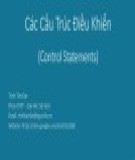

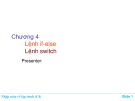
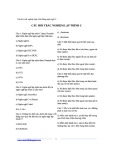

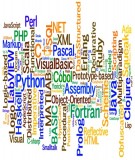
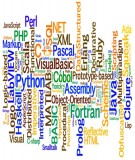











![Hệ thống quản lý cửa hàng bán thức ăn nhanh: Bài tập lớn [chuẩn nhất]](https://cdn.tailieu.vn/images/document/thumbnail/2025/20251112/nguyenhuan6724@gmail.com/135x160/54361762936114.jpg)
![Bộ câu hỏi trắc nghiệm Nhập môn Công nghệ phần mềm [mới nhất]](https://cdn.tailieu.vn/images/document/thumbnail/2025/20251111/nguyenhoangkhang07207@gmail.com/135x160/20831762916734.jpg)





